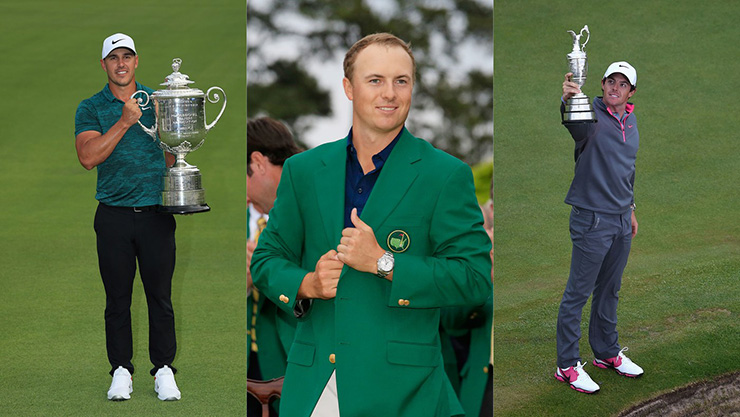By Shane Ryan
By now, you know the details of the new schedule by heart: Players Championship to March, PGA Championship to May, FedEx Cup playoffs no longer in a mano-a-mano duel with the merciless NFL juggernaut. Everyone wins, nobody loses, governing bodies are thrilled, and even the fans benefit from four months of nonstop high-stakes golf. We’re on the verge of Year Zero with this week’s Players, and it all makes so much sense that the only really remarkable facets of the change are that it didn’t happen sooner and that something so obvious and beneficial wasn’t killed in cold blood in the developmental phase by some form of institutional inertia or the sport’s innate aversion to change.
In short, it’s a coup.
But let’s talk about the effect it might have, particularly on the majors. For that, I want to take you back to a short stretch in 2014, between July 17 and Aug. 10. In the span of those 25 days, Rory McIlroy tapped into otherworldly black magic that rendered him unbeatable. He won three straight tournaments, and he did it by sheer physical domination, by psychological supremacy, and by superlative pressure play. For that brief stretch, lasting less than a month, he transcended the sport.
As it happened, those 25 days happened to include both the Open Championship at Hoylake and the PGA Championship at Valhalla, and by winning both, Rory transformed his career and became his generation’s greatest champion—a title he relinquished gradually, and then suddenly after it became clear he lost his ability to win.
To engage in a little alternative history here, let’s imagine that instead of catching fire in late July and early August, Rory struck the mother lode in … I don’t know, January. What would we think of him today? He’d like to have two fewer majors, and the iconic victory moments he experienced would not be iconic for the simple fact that nobody, relatively, would have been watching. His reputation has begun to suffer today, but imagine if, on the verge of 30, he had just two majors. He’d practically be an underachiever!
The point is, the perception of Rory McIlroy depends so much on the fact that he went into Torrid Mode at the perfect moment in 2014, doubling his major total and etching himself into the minds of the golfing public.
Why does that matter today? Because, with the new schedule, all four majors will go down in the space of about three months. It begins at Augusta on April 11 and ends at the Open in Portrush on July 21. That’s four majors in 102 days, and if you were ever tempted to compare championship golf to a can of sardines, well … now is the time. And the implications are clear: Any player who gets really hot at the right time could pocket two to three majors.
Unless your name is Tiger Woods, two majors in the same year are difficult. But it does happen. In fact, it’s happened eight times since 2000. Of those eight, six of them have been consecutive (Brooks Koepka’s 2018 season is a notable exception). Of those six, four have happened over the shortest stretch between tournaments, which is the British Open-PGA month. Throw in the Players Championship, and you have two more examples—Martin Kaymer winning at Sawgrass and the U.S. Open in a red-hot month in 2014, and Tiger capturing the Players-Masters double in one month in 2001. That proves the point—a player who wins multiple huge tournaments in a calendar year is likely to do so back-to-back over a relatively short span.
Now that Augusta is no longer an early outlier on the major calendar, everything happens in a relatively short span. Which means that over time, we’re almost certainly going to see more multiple winners, and they’re likely going to happen consecutively with far greater frequency.
Is that a good thing?
It depends on who you ask. For the player that boosts his major total by two or three, it’s an obvious yes. For those that get overwhelmed by such a streak, it will be less impressive. But for the fans of the sport, and for posterity, I see this as emphatically positive. We the people want repeat champions—in the only sport where the best of the best lose an overwhelming percentage of the time, any trend toward sustained greatness is a boon. History, too, wants multiplicity. It wants the likes of Rory and Spieth and Koepka and Thomas to creep toward 10 majors because nothing lends weight to the present like its superstars climbing to the historical heights.
Any way you view it, this accidental side effect is good for the game. It’s more proof—proof we didn’t need, but that we’ll accept in evidence—that the brain trust who envisioned the transformative schedule shift can do no wrong.









